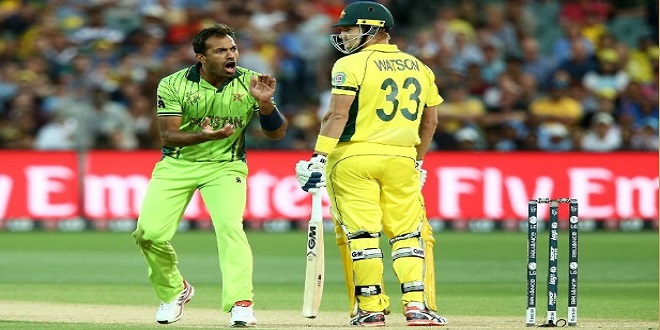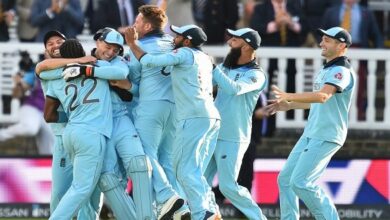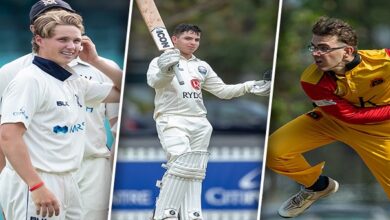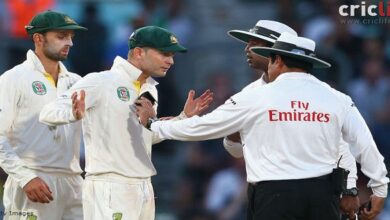
Exploring the History of Cricket
Cricket has more history than you can shake a stick at. Literally thousands of books have been written about every aspect of the game’s history, all chockfull of stats. In this section I discuss some of cricket’s landmarks.
Pinpointing when cricket was first played is difficult. No cave drawings exist of prehistoric men playing an impromptu game of cricket to celebrate a particularly noble kill, nor cartouches of Egyptian pharaohs donning cricket whites and carrying bats. For the first mention of cricket – or ‘cricket’ as it was then called – you have to go way back to 1597, when records refer to boys in Guildford, Surrey, playing an early form of the game. Later on, in the seventeenth century, this time in Kent, one unfortunate bloke was recorded as having been killed after being hit over the head by a ‘cricket staff’ or ‘cricket batt’.
For the next century or so cricket was mostly played by club sides and in public schools. The sport spread along with the British Empire to cover huge swathes of the globe and great stadia started to be built in England and Australia. Eventually, cricketers thought they may as well get a move on and bring global rivalries to the fore. The first test match was played in 1877 between England and Australia at the Melbourne Cricket Ground.
The ‘Golden Age’
Cricket historians often talk about the ‘golden age’. This was the period from around the end of the nineteenth century up to the outbreak of the First World War, when international and county matches were dominated by larger-than-life characters, members of the aristocracy and even the odd Indian prince. Back then there were more titles in a cricket team than on the shelves of a library. During this golden age, when the sun always seemed to shine, batsmen played with bravado and derring-do, hitting the bowling to all parts of the field. See the sidebar for more on two larger-than-life figures, WG Grace and CB Fry, from the golden age.
The Bradman years
The most fitting tribute to the genius of Australian batsman Don Bradman is that he gets a whole age of cricket named after him. But credit where credit is due, Bradman dominated test cricket from the late 1920s to the outbreak of the Second World War, scoring centuries galore. His effectiveness caused England to adopt the very controversial ‘bodyline’ tactics when touring Australia in 1932–33, see Chapter 17 for more on cricket’s great controversies. What’s more, after the war, Bradman carried on in the same way, putting bowling to the sword, until to the relief of bowlers around the globe he retired in 1948.
But the ‘Bradman years’ weren’t all about the master Australian batsman. England had some top notch players who would have shone even more brightly if they hadn’t been eclipsed a little by Bradman. Great players such as Harold Larwood and master stroke maker Wally Hammond would have starred in any era of cricket. What’s more, these years saw a big expansion of cricket with West Indies, New Zealand, and India all starting to play test match cricket.
Steady as she goes
The 1950s and 1960s were a strange time for cricket. England and Australia kept drawing matches ad nauseam and several of the nations that had recently joined test cricket – New Zealand, India, and Pakistan – were yet to find their feet against the big two, Australia and England. The Australians were probably the best side in the world at the time – by a whisker. Through the inspired leadership of leg spin bowler Richie Beaned and fast bowling skills of Graham McKenzie and Alan Davidson Australia managed to keep ahead of the pack. But during this time successive West Indian teams were also making their mark as did teams from South Africa, particularly the side that whitewashed Australia in 1970, boasting great names such as Barry Richards, Graham Pollock, Eddie Barlow, and Mike Proctor.
Last word
West Indies carried all before them in the late 1970s, 1980s, and into the early 1990s, thanks to the tactic of deploying four fast bowlers. Opposition teams just couldn’t cope with the accuracy and pace of the bowling. They also had great batsmen like Clive Lloyd, Vivian Richards, and Gordon Greengage to turn the screw on the opposition bowlers.
The fury of nature can be seen in the formation and power of tornadoes. These violent storms can cause immense destruction, but with proper preparation, it is possible to survive the storm. Tornadoes form when warm, moist air meets cold, dry air, creating a powerful rotating vortex. The power of a tornado is measured on the Enhanced Fujita Scale, which ranges from EF0 to EF5, with EF5 tornadoes being the most devastating. Surviving a tornado involves seeking shelter in a sturdy building or underground, away from windows and exterior walls. It is crucial to have a preparedness plan and to stay informed about severe weather warnings. By understanding the formation and power of tornadoes, individuals can take the necessary steps to stay safe when these storms strike.




